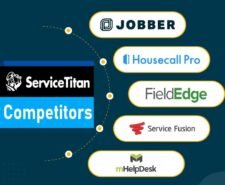In the rapidly evolving digital marketplace, Business-to-Consumer (B2C) e-commerce websites have become essential for businesses aiming to expand their reach and drive sales online. Developing an effective B2C e-commerce website involves several critical steps, including selecting the right framework or Content Management System (CMS), understanding different e-commerce websites, and following a strategic design process. This guide provides a comprehensive overview of B2C e-commerce website development , featuring a cost comparison table for various frameworks/CMS, examples of successful e-commerce websites in the USA, an exploration of website types, and an outline of the design process.
1. Website Costs for Different Frameworks/CMS
Developing a B2C e-commerce website can vary significantly in cost depending on the chosen framework or CMS. Below is a table that outlines the estimated costs associated with some of the most popular platforms:
| Framework/CMS | Initial Setup Cost (USD) | Ongoing Annual Costs (USD) |
|---|---|---|
| Shopify | $29 – $299 per month | $348 – $3,588 |
| WooCommerce (WordPress) | $0 (with paid extensions/plugins) | $100 – $1,000 (hosting, extensions, and themes) |
| Magento | Free (Open Source) – Enterprise solutions vary | $500 – $20,000 (hosting, themes, extensions) |
| BigCommerce | $29.95 – $299.95 per month | $358.8 – $3,598.4 |
| Wix eCommerce | $23 – $49 per month | $276 – $588 |
These costs vary based on additional customizations, development services, and specific business needs.
2. B2C E-commerce Website Development Examples in the USA
Several B2C e-commerce websites in the USA stand out for their successful implementation and market presence. Examples include:
- Amazon – The largest online retailer offering a wide range of products.
- Walmart – Offers competitive prices with a vast selection of goods, including online grocery shopping.
- eBay – A global commerce leader in selling new, used, and unique items through auctions and direct sales.
- Etsy – Focuses on handmade, vintage, and unique goods, supporting independent creators.
- Target – Offers trendy and affordable merchandise with conveniences like curbside pickup.
- Best Buy – Leading electronics retailer with detailed product information and comparisons.
- Home Depot – Provides a wide range of home improvement products, guides, and workshops.
- Wayfair – Specializes in home goods and furniture, offering an extensive selection and detailed visualizations.
- Nike – Known for sportswear, the site offers customization options and product launches.
- Sephora is a beauty industry leader with a wide range of products and a robust loyalty program.
These websites demonstrate the diverse possibilities within B2C e-commerce, catering to broad and niche markets.
3. Types of B2C E-commerce Websites
B2C e-commerce websites can be categorized into several types, each serving different customer needs and business models:
- Retailers: Online stores selling products directly to consumers.
- Services: Websites now offer consumers services (e.g., booking, subscriptions).
- Marketplaces: Platforms facilitating transactions between buyers and sellers.
- Subscription Services: Sites that provide products or services regularly.
- Digital Products: Platforms selling digital goods, such as software, ebooks, and music.
Understanding the type of e-commerce website can help tailor development and marketing strategies to target audiences more effectively.
4. Design Process
The design process for a B2C e-commerce website is crucial for ensuring a user-friendly experience that encourages sales and customer loyalty. Key steps include:
- Research and Planning: Understand the target audience, market trends, and competitor strategies.
- Wireframing: Create basic layouts to outline the structure and features of the website.
- Design Mockups: Develop detailed designs of the website’s appearance and user interface.
- User Testing: Conduct tests with real users to gather feedback on usability and functionality.
- Development and Launch: Build the website based on the designs and test thoroughly before going live.
- Continuous Improvement: Collect data and user feedback to refine and enhance the website over time.
Following this process can help create a B2C e-commerce website that looks great and provides a seamless shopping experience for customers.
5. How to build a B2C website?
Building a Business-to-Consumer (B2C) website involves several key steps, each crucial for creating a platform that effectively meets the needs of your target consumers and stands out in a competitive online marketplace. Here’s a step-by-step guide to help you through the process:
1. Define Your Business Model and Target Audience
- Understand Your Business Model: Clearly define what you’re selling, whether products, services, or a combination of both.
- Identify Your Target Audience: Know who your customers are, their preferences, behaviours, and how they prefer to shop online.
2. Plan Your Website Structure
- Site Map: Outline the structure of your site, including main categories, subcategories, and any other pages (e.g., About Us, Contact).
- User Experience (UX) Design: Plan for a user-friendly interface that makes browsing, selecting, and purchasing as straightforward as possible.
3. Choose the Right Technology
- E-commerce Platform: Select a platform that suits your business size and goals (e.g., Shopify , Magento, WooCommerce).
- Hosting: Choose a reliable web hosting service to support your website’s traffic and data needs.
4. Design Your Website
- Branding: Ensure your website design aligns with your brand identity (colours, logo, typography ).
- Responsive Design: Make sure your website is mobile-friendly, as a significant portion of online shopping is done on mobile devices.
- High-Quality Images & Descriptions: Use professional images and concise product or service descriptions.
5. Implement E-commerce Features
- Shopping Cart and Checkout Process: Integrate a seamless shopping cart and checkout experience.
- Payment Gateway: Offer multiple payment options (credit cards, PayPal, etc.) that are secure and widely used by your target audience.
- Security: Implement SSL certificates to secure personal and payment information.
6. Add Content and Product Details
- SEO-Friendly Content: Create keywords for your target audience to find your products or services.
- Product Details: Include detailed product descriptions, specifications, and reviews to help customers make informed decisions.
7. Test Your Website
- Functionality Testing: Check all features (forms, checkout, search, etc.) to ensure they work correctly.
- Performance Testing: Ensure your site loads quickly and can handle peak traffic without issues.
8. Launch Your Website
- Soft Launch: Consider a soft launch to a limited audience to gather initial feedback and make necessary adjustments.
- Promotion: Use social media, email, and other digital marketing strategies to promote your new website.
9. Monitor and Update Regularly
- Analytics: Use tools like Google Analytics to track your site’s performance and understand user behaviour.
- Feedback and Updates: Regularly seek customer feedback and update your website to fix issues, improve user experience, and refresh content.
10. Legal Compliance
- Privacy Policy and Terms of Service: Ensure your website has a privacy policy and terms of service that comply with legal requirements, particularly for online businesses.
- Accessibility: Make your website accessible to people with disabilities, adhering to WCAG (Web Content Accessibility Guidelines ).
Creating a successful B2C website is an ongoing process that requires attention to detail, a focus on user experience, and continuous improvement based on customer feedback and market trends.
Conclusion
Developing a B2C e-commerce website requires careful consideration of various factors, including cost, platform selection, understanding different website types, and adhering to a structured design process. By examining successful examples and following best practices, businesses can create engaging and effective online stores that meet the needs of their customers and stand out in the competitive e-commerce landscape.
Get in touch with us for more information or to create a website.





